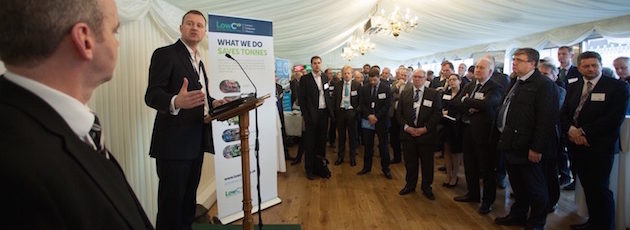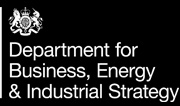
Event Review: Manufacturers and supply chain companies be aware – CO2 and air quality emissions from transport have now been joined up
The automotive industry is likely to see future implications from the joining up of the UK carbon emissions and air quality agendas by a new initiative from the Low Carbon Vehicle Partnership (LowCVP) and the Clean Air Alliance (CAA), which was launched in Westminster on 1 March 2016…
Over recent years diesel-engined cars have been promoted as the best solution to achieve high miles per gallon and lowest CO2 emissions. However we’re now at a point where there’s increasing awareness of the negative impact upon local air quality from diesel vehicles – specifically from NOx and particulate emissions.
Up until now organisations such as the LowCVP have been involved on the CO2 emissions issue, and other organisations, such as CAA, have been campaigning on the air quality issue. Now (some might say at last) both of these organisations – and others – have come together with the aim of lowering CO2 emissions and giving us cleaner air to breathe.
The new initiative, which focuses on the impacts of road transport, was launched with the publication of a communiqué outlining the areas of agreement and potential collaboration between the two communities.
BARRY GARDINER MP, SHADOW MINISTER FOR CLIMATE CHANGE
The first speaker at the launch event was Barry Gardiner MP, Shadow Minister for Climate Change, who claimed that each year in the UK there are 29,000 deaths due to particulate matter and 23,000 deaths due to nitrogen dioxide. In total that’s 52,000 deaths per year which are primarily attributed to emissions from vehicles – which is higher than the official government statistics – and a figure that seems shocking in today’s society.
ANDY EASTLAKE, MANAGING DIRECTOR, LOWCVP
LowCVP Managing Director Andy Eastlake followed on from Barry Gardiner, explaining that the new partnership would work in a collaborative way to help the UK government to lower CO2 and establish cleaner air. Andy also said that the Volkswagen emissions scandal had caused confusion about emissions amongst motorists – and we would add that it also seems to have caused confusion within other sectors such as the media.
DAN BYLES, CHAIR OF THE CAA
Dan Byles, Chair of the CAA, made the point that the issue of air quality cuts across government departments, policies and budgets, including transport, energy and the NHS, and there’s a need to join up these different areas. If significant improvements in air quality were achieved, then there could be huge savings for the NHS; so a ‘whole system approach’ is needed.
EDMUND KING OBE, PRESIDENT OF THE AA
Edmund King OBE, President of the AA, was another member of the panel, who talked about the AA having 15 million drivers who are polled on motoring-related issues each month. Whilst there is an overall desire amongst AA members to see improvements in air quality, this hasn’t necessarily translated into the purchase of electric vehicles, with reasons quoted including EV driving ranges not being sufficient, the public recharging infrastructure not being adequate, recharging times taking too long, and EVs still being expensive.
DR JOHN LAMONTE, CHIEF EXECUTIVE, TRANSPORT FOR GREATER MANCHESTER
Dr John Lamonte, Chief Executive, Transport for Greater Manchester, gave the statistic that out of a population of 2.7 million people in the city region, 6% of deaths in the area are due to poor air quality, and collaboration has to be the way forward to address this issue. Encouraging more people to use public transport in the area is seen as a key solution – but other speakers made the point that this isn’t a solution that is seen as viable for everyone in many rural areas of the UK.
HOW WILL MOTORISTS BE ENCOURAGED TO SWITCH TO NEW, LOWER EMISSION MODES OF TRANSPORT?
The most important factor was cited by at least two speakers: convenience. Regardless of any other carrots or sticks, people will choose the easiest option for them. And it’s looking like there’s one key enabler to access the most efficient mobility solution: your smartphone. This could help accelerate the move away from car ownership, to accessing whatever transport solution you need at the time via your phone (all this is now sounding familiar – see our review of the previous week’s Future Powertrain Conference 2016).
It was repeatedly stressed that this event was the first stage in the process of the LowCVP, the CAA and other organiations coming together and jointly addressing CO2 and air quality issues, with the aim of developing policies to reduce emissions.
SO WHERE DOES ALL THIS LEAVE US IN TERMS OF WHICH CAR MOTORISTS SHOULD CHOOSE?
Current politically-correct fashion says to buy a pure electric car, or a petrol-electric plug-in hybrid, as the emissions impacting on local air quality will be lower – but at the moment this doesn’t result in any financial benefit for the motorist.
In contrast, the main requirement from the typical private buyer or company car user is for the highest miles per gallon, which saves the motorist money, in which case diesel will be the preference.
All this depends upon driving patterns of course, but you would imagine that the perfect solution would be a plug-in diesel hybrid, rather than a petrol plug-in hybrid, allowing electric, zero tailpipe emission driving in cities, and diesel power for long journeys. However at the moment there’s a grand total of one of these cars on sale: the Volvo V60 Estate Plug-in Hybrid (thanks to global market demands, there are increasing amounts of petrol plug-in hybrids on sale). And this incorporates two expensive powertrains, making the car pricey, as well as heavy – so impacting upon real-life fuel economy and electric range.
So, there really is no one solution for everyone. A pure electric car is ideal if it meets your driving needs (especially if it’s charged using renewable energy). Otherwise a petrol-electric plug-in hybrid or range-extended electric vehicle will be the next best thing in terms of local air quality emissions. But these vehicles won’t result in lower CO2 in real-life on longer journeys. In this case a modern, efficient Euro 6 diesel still takes some beating.





